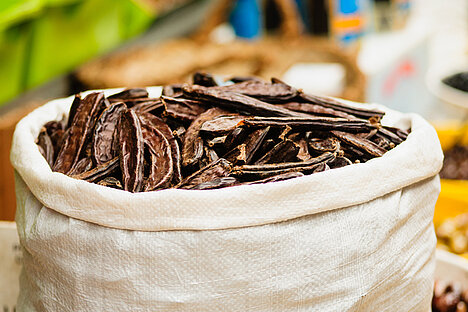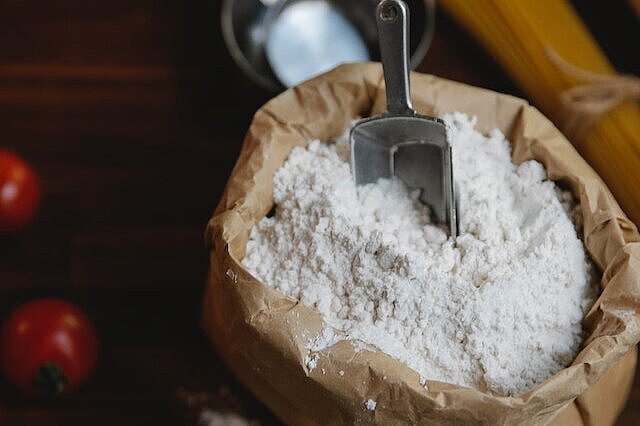Locust bean gum

You may have heard of locust bean gum or even have it in your kitchen cupboard. But did you know that this natural thickener is also suitable for dogs? In this article, you will find out what locust bean gum is, how it is produced and what advantages and disadvantages it has for your four-legged friend.
What is locust bean gum?
Locust bean gum is a fine, white powder obtained from the seeds of the locust bean fruit. The carob fruit is a brown pod that grows on a tree that is mainly native to the Mediterranean region. The seeds are dried, cleaned and ground to obtain the flour.
Locust bean gum is rich in fiber and has a high swelling capacity. This means that it can bind a lot of water, giving it a gel-like consistency. This is why it is often used as a thickener or gelling agent in the food industry. It has a neutral taste and can be used for both sweet and savory dishes.
What are the benefits of locust bean gum for dogs?
Locust bean gum can also have some benefits for dogs. For one, it can help regulate bowel movements if your dog suffers from diarrhea or constipation. This is because it supports the intestinal flora and stimulates bowel movements. It can also absorb excess fluid in the intestines and thus make the stool firmer.
On the other hand, locust bean gum can also increase your dog's feeling of satiety. This can be particularly useful for overweight dogs that eat too much. By mixing a little locust bean gum into the food, you can reduce the calorie intake and keep your dog full for longer.
What are the disadvantages of locust bean gum for dogs?
Carob bean gum is a natural product, but that doesn't mean it can't have side effects. As with any other food, you should make sure that your dog is not allergic to it. Possible symptoms include itching, skin rash or gastrointestinal problems.
You should also not feed your dog too much locust bean gum. An overdose can lead to flatulence, abdominal pain or vomiting. As a rule of thumb: no more than one teaspoon per 10 kilograms of body weight per day.
How can you feed locust bean gum to your dog?
If you want to feed locust bean gum to your dog, you should always mix it with plenty of water. This prevents it from swelling up in the stomach and causing digestive problems. You can either mix the flour directly into the food or mix it with a little water to make a paste and give it as a treat.
Locust bean gum is not a miracle cure and should not be considered a substitute for a balanced diet or veterinary treatment.
Properties 4
Are you looking for other ingredients with a specific property?
Just click on them to find more.
If you notice any signs of hypersensitivity or poisoning in your dog, you should see your vet immediately. We are not a substitute for a vet, but we try to be as accurate as possible. Every dog reacts differently and we recommend you get a second opinion or consult your vet if in doubt.
Stay healthy and take good care of your four-legged friend!😊
Similar to Locust bean gum
Guar gum, also known as guaran or guar gum, is a carbohydrate obtained from the seeds of the guar bean. The guar bean is a legume that originally comes from India or Central Africa and is now mainly...
Xanthan gum is a thickening agent obtained from the fermentation of sugar by bacteria. It has the property of gelling and stabilizing liquids. This means that it prevents the components of a product...
Agar-agar is an extract from red algae, which mainly grow in Asia. It has a gel-like consistency and can be used as a thickening or gelling agent. Agar-agar is tasteless and contains no animal...
Pectin is a plant polysaccharide found in the cell walls of fruit and vegetables. It is a natural gelling agent that is released when fruit is cooked or frozen. Pectin is often used as an additive...



